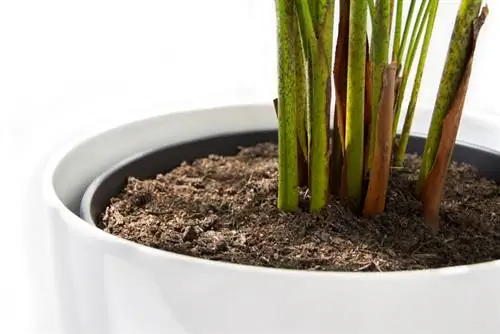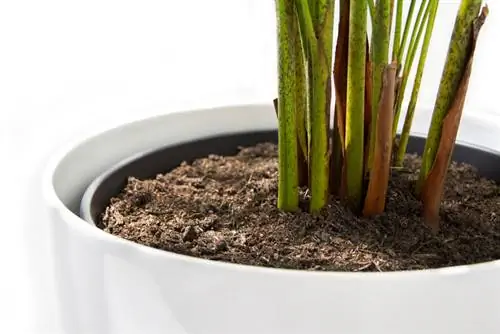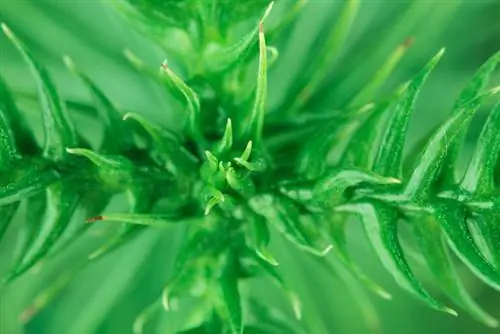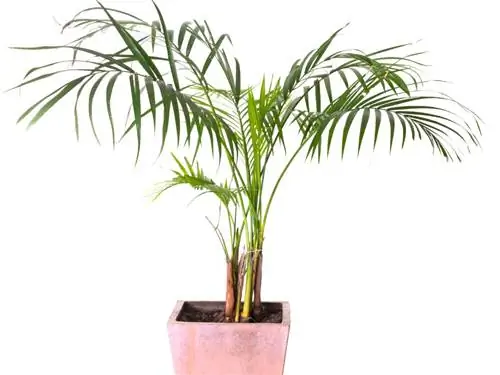- Author admin [email protected].
- Public 2023-12-16 16:46.
- Last modified 2025-01-23 11:21.
All too often you don't have to repot a Kentia palm. Only when the pot has become too small should you consider moving to a larger planter. What you need to consider when repotting Kentia palms.

When and how should you repot a Kentia palm?
Repotting a Kentia palm is necessary every 2-3 years in spring when roots grow out of the drainage hole or the root ball protrudes. Use a deeper and wider container, loose substrate and water the palm after repotting. Avoid waterlogging and only fertilize the palm tree after a few months.
The Right Time to Repot a Kentia Palm
The Kentia palm needs a larger pot if roots grow out of the drainage hole at the bottom or the root ball pushes out of the top of the pot. It is usually enough if you repot the Kentia palm every two to three years.
The palm tree should not be left in the same pot for longer than three years, as the soil will then be too exhausted and must be replaced with fresh substrate.
The best time for repotting is early spring.
The right planter
Like almost all palm trees, Kentia palms also have long taproots that grow deep and not wide. The pot must therefore be as deep as possible. Choose a vessel that is deeper and slightly wider than the previous one.
There must be a drainage hole in the bottom of the pot because Kentia palms cannot tolerate waterlogging. It is good to have drainage in the bottom of the pot so that the roots are never directly in the water after watering.
How to repot
- Prepare new planter
- Unpotting Kentia palm
- carefully shake off old substrate
- Put the palm tree in the new pot
- Press the soil carefully
- Water the Kentia palm
Special palm soil (€7.00 at Amazon) from the garden center is suitable as a planting substrate. But you can also put the soil together yourself. To do this, you need mature compost that you mix with sand, gravel or lava granules. Thanks to the additions, the substrate remains nice and loose and does not collapse.
Do not fertilize immediately after repotting
After repotting into fresh substrate, the Kentia palm is sufficiently supplied with nutrients. You must therefore not fertilize the palm tree in the first few months after moving.
If the Kentia palm has been in the pot for a long time, it is fertilized with liquid fertilizer once a month from March to September. No fertilizer is given in winter.
Tip
The Kentia palm is a very slow-growing type of palm tree. If you also want to ensure that it doesn't get too tall, trim the roots slightly when repotting.






